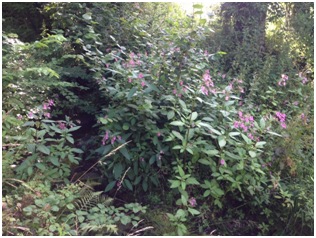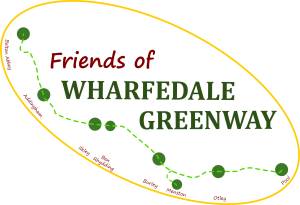10. Controlling non-native invasive species
Why?
We have many non-native species in the UK. Many are benign and have been assimilated into our natural environment. An example is the Mandarin Duck introduced in the 20th century and now seen locally on the Wharfe. Some non-native species, however, are invasive. Typically, they spread rapidly, out-compete our native species and are difficult to control. A list of species of concern is provided by Defra here under the Wildlife and Countryside Act 1981 (Section 9). Guidance on managing invasive species and how the law should be interpreted is given here https://assets.publishing.service.gov.uk/media/6290dcbce90e07039ae3eb9c/wildlife-countryside-act-guidance.pdf. A key element for plants is the rule that you cannot intentionally plant listed species on your land or intentionally cause existing listed plants to spread.
How?
 The method of control differs from species to species.Learn to identify the three invasive plants of most concern. These are Himalayan balsam, Giant hogweed, and Japanese knotweed. Click here for more information on identification
The method of control differs from species to species.Learn to identify the three invasive plants of most concern. These are Himalayan balsam, Giant hogweed, and Japanese knotweed. Click here for more information on identification- Record any sightings on the Yorkshire Invasive Species Forum map here and copy information to AEG (
This email address is being protected from spambots. You need JavaScript enabled to view it. ) - Join an AEG summer work party to remove Himalayan balsam from our Addingham becks and along the River Wharfe between Bolton Abbey and Ilkley
- Report sightings on Signal crayfish to AEG (
This email address is being protected from spambots. You need JavaScript enabled to view it. ). More information about the distribution of crayfish in our becks using DNA can be found here - Learn more from the AEG website: https://addinghamenvironmentgroup.org.uk/index.php/wildlife/invasive-plants and read AEG’s annual reports for the village

















